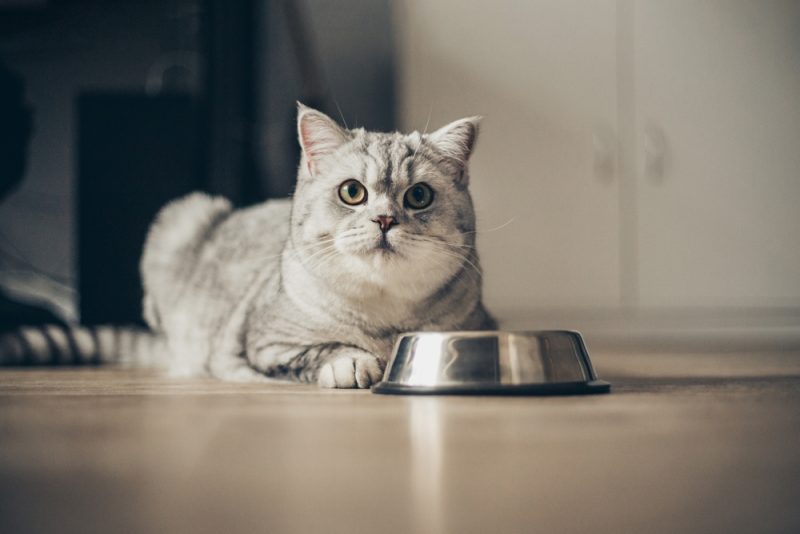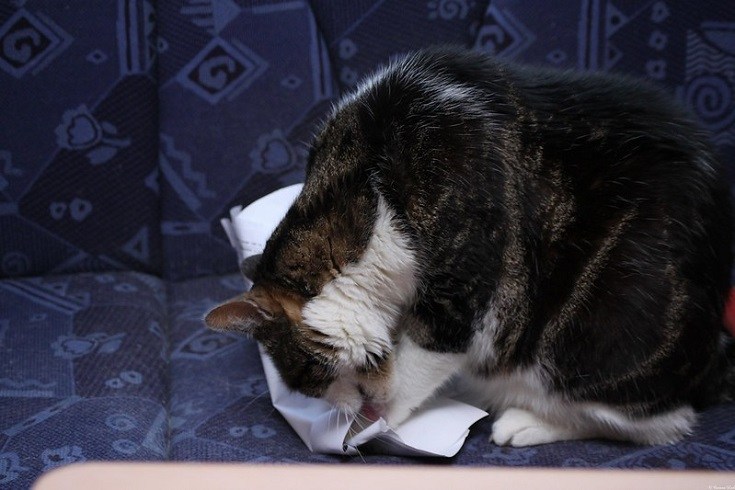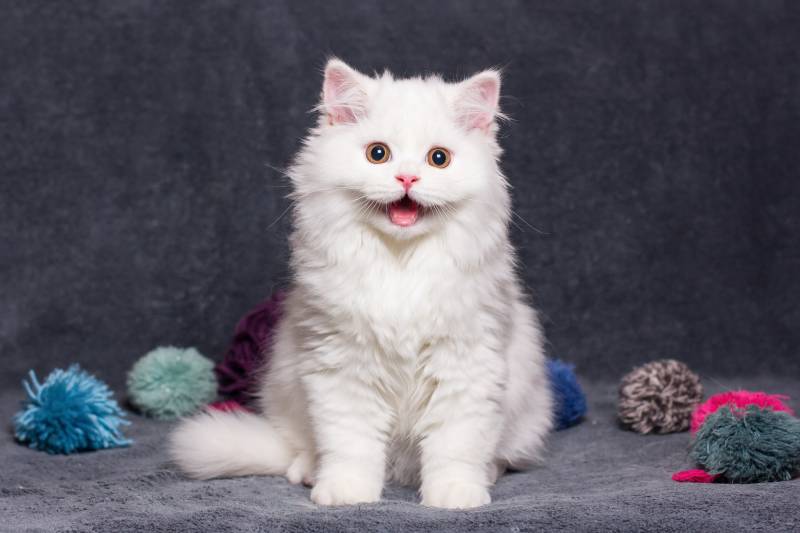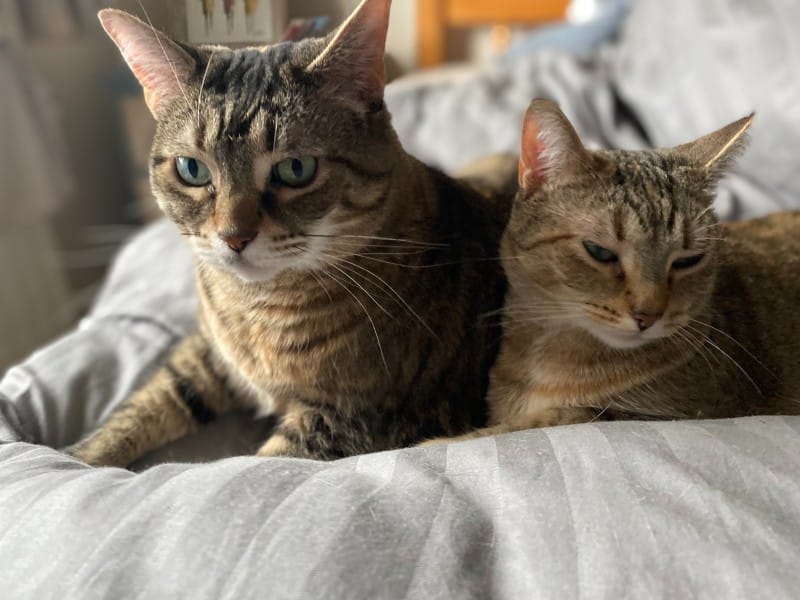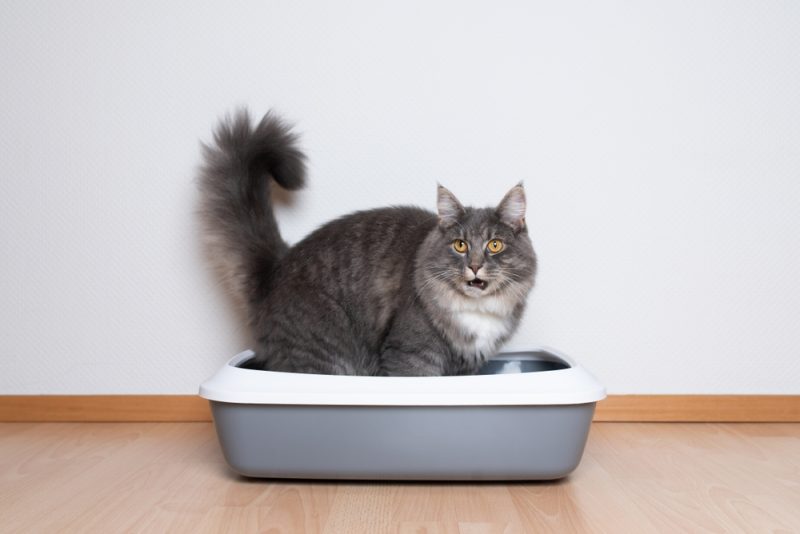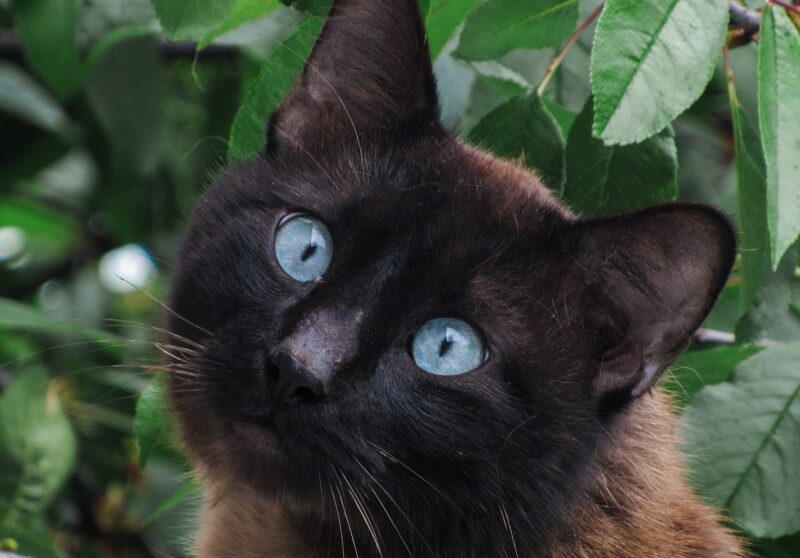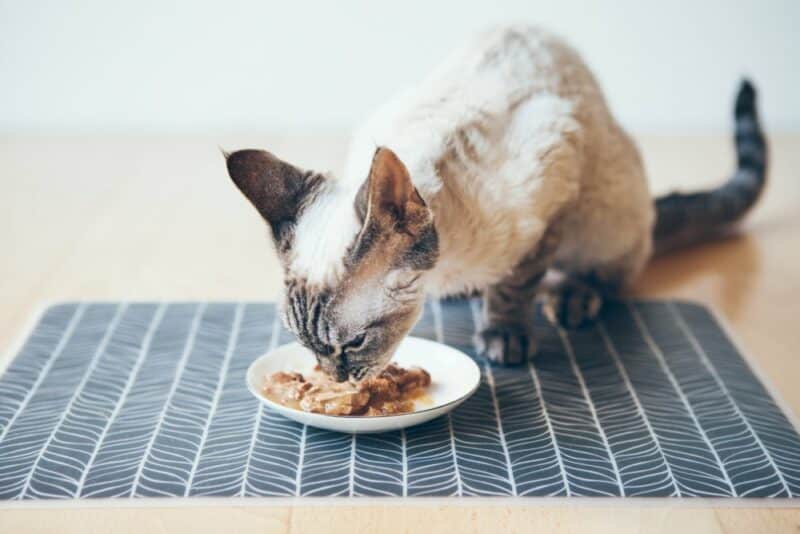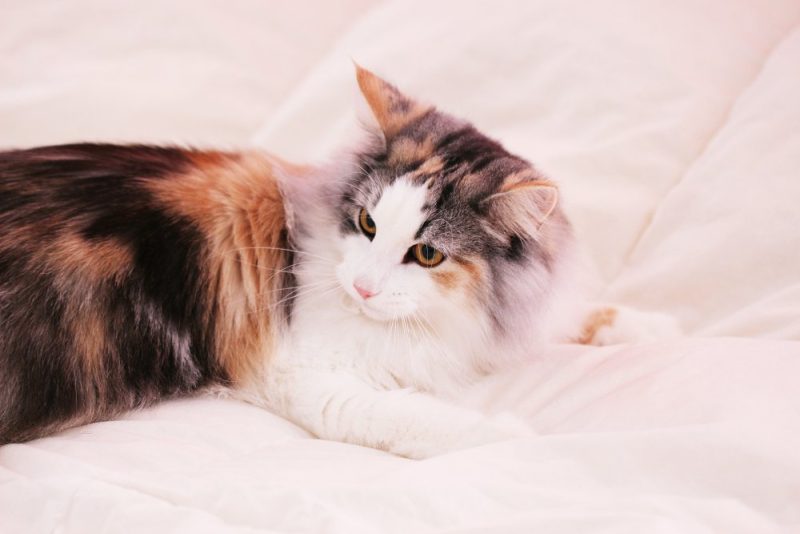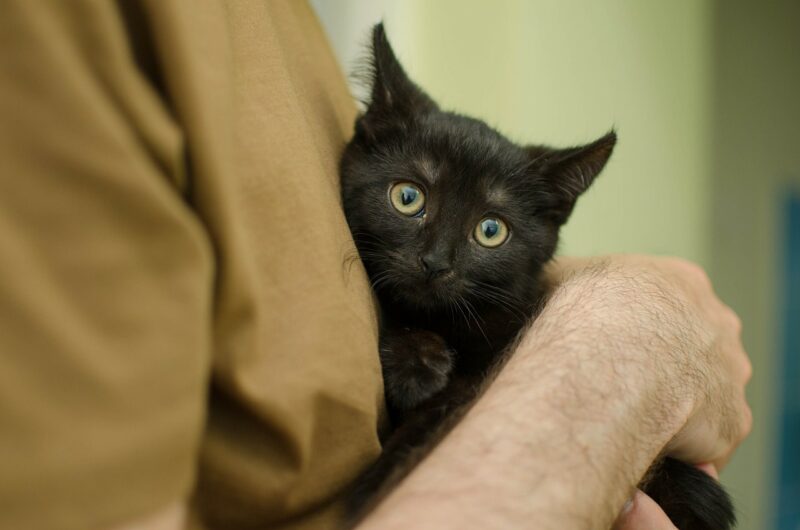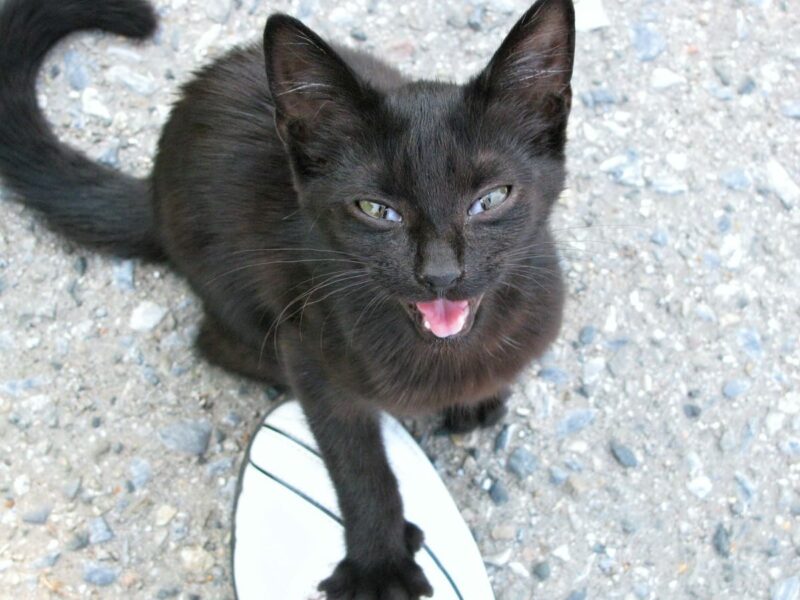Cats will usually sit, stand, or lay on all four paws when having a drink, but there are times when you might see them having a proper lay down at the water bowl, not supported by their feet. This isn’t a ‘normal’ posture for a drinking cat, and there are a few reasons why they might have adopted it. Some are not too worrying, but others are a sign that your cat needs to be seen by a vet. If you are concerned about where, how, and how much your cat is drinking, the best thing to do is make an appointment for a check-up with your vet so they can perform a physical examination and run any tests needed to ensure your cat is fit and healthy.
Let’s take a look at some possible reasons to explain why a cat might lay down to drink.

The 6 Possible Reasons Why A Cat Lays Down To Drink
1. It May Be Normal for Some Cats
Some younger cats may occasionally drink water lying down, especially if they have just returned from an outdoor adventure or they’ve been running around the house doing zoomies. This may also happen if the weather is warm and your cat is feeling particularly tired.
Rather than thinking this is normal, it’s important to interpret the drinking in the context of the situation, as well as your cat’s age, health, and behavior. If a young cat has lain down and drunk water after strenuous exercise, this is likely quite normal given the circumstances. If an older cat is lying down and drinking water, this is a cause for concern and will require prompt input from your vet.
Let’s look into possible medical causes for your cat drinking water from a lying down position.
2. They’re Anxious or Stressed
Just like humans, cats can suffer from anxiety or feel stressed. This may happen if there have been sudden changes in the household, such as a new pet or a baby, or building work, causing your cat to feel scared and insecure, especially in cats that haven’t been adequately socialized as kittens. Cats that are in pain or ill may also become anxious. Most cases of anxiety develop in cats younger than a year, but they can occur at any time throughout their life.
Anxiety can cause behavioral changes in your cat. They may be restless, leading to pacing, hiding, or hypervigilance. They may also drool or have a decreased appetite. Depending on the severity of the case, your cat may also display other signs such as toileting outside of their litter box, shaking, sleeping more, or overgrooming. In turn, this can lead to health issues such as urinary problems.
Treating anxiety requires understanding its root cause and creating a balance between managing your cat’s environment, teaching them coping mechanisms, and consulting with your vet. They may recommend particular calming supplements, as well as using a pheromone diffuser. If left untreated or ignored, your cat’s anxiety will grow worse over time.
It is vital to catch this issue as early as possible so treatment can begin shortly. Therapy for anxiety requires time and dedication, so don’t expect your cat to be better overnight. Your feline will need your support and patience to manage their anxiety in the long term.
If you need to speak with a vet but can't get to one, head over to PangoVet. It's an online service where you can talk to a vet online and get the advice you need for your pet — all at an affordable price!

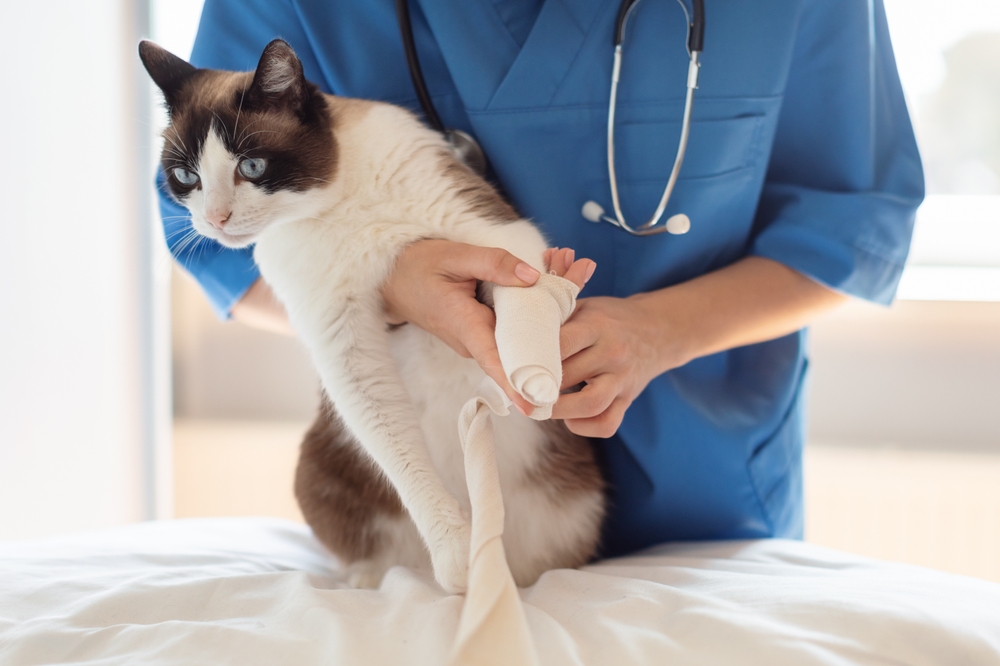
3. Dehydration
This may have been apparent to you, but one reason that your cat is behaving oddly around their water bowl could be that they’re dehydrated.
Hydration is vital in cats. If there is insufficient water intake, their bodies can lose regulation of several vital functions. Cats often experience weakness, lethargy, poor appetite, and dry mucous membranes when dehydrated. If you suspect your cat has not been getting enough water for whatever reason, contact your vet as soon as possible.
To help your cat increase their water intake, you can set out extra water bowls or feed them wet food. If you take your cat to the vet, they may suggest that your cat undergo fluid therapy to help bring their hydration levels back up, as well as find the cause. There are many health conditions that can lead to dehydration, including kidney disease, diabetes, gastroenteritis, some types of cancer, and more.
Our Favorite Cat Water Fountain
Making sure your cat drinks enough water can require a little creativity and the right fountain choice! A nicely made product like Hepper's Stainless Steel Cat Water Fountain will encourage your cat to stay hydrated by providing fresh, flowing water. We particularly like this model because it's easy to clean and offers excellent triple filtration, multiple flow modes, and a large capacity.
- Premium 304-Grade Stainless Steel - This metal cat water fountain is hygienic, with superior...
- Serene & Healthy Cat Drinking Fountain Experience - With whisper-quiet pumping & an advanced...
- Say Goodbye to Dehydration - Provide your cat with a constant source of flowing water with this...
At Catster, we’ve admired Hepper for many years and decided to take a controlling ownership interest so that we could benefit from the outstanding designs of this cool cat company!
4. Kidney Disease
Kidneys are an essential organ system responsible for your cat’s fluid maintenance, as well as other crucial body functions. When they are suffering from kidney disease, fluid maintenance is thrown out of balance.
There are two types of kidney disease. One is known as acute kidney disease, and the other is chronic kidney disease. The cause of either of these could be several factors, such as injuries, bacterial or viral infections, toxin exposure, a consequence of a urinary blockage, cancer, or genetics.
Signs of kidney disease often include increased thirst and urination, dehydration, poor appetite, weight loss, poor coat, vomiting, lethargy, halitosis, or bad breath, while in the acute disease urine production can be severely reduced or even absent, causing the cat to feel very ill and often collapsed, while not passing much urine. A urinary blockage on the other hand, caused by stones, crystals, inflammation, or sediment, especially in male cats, leads to frequent straining in and out of the litter box, while not being able to pass any urine, or very little, which can be stained with blood. This is a life-threatening condition and requires immediate veterinary care.
All types of kidney disease, no matter their cause or duration, need to be treated by your vet urgently. Through various medications, fluid therapy, oral hydration, appetite stimulants, and a special renal diet, many cases of kidney disease can be managed going forward, while urinary blockage requires urgent medical and sometimes even surgical management and may be fatal if left untreated. Depending on the stage of your cat’s disease, a different approach to treatment may be recommended.
Unfortunately, cats can’t live without their kidneys. Since chronic kidney disease is often progressive and debilitating, it can lead to gradual deterioration and worsening quality of life. Some cats may need to be humanely euthanized.
However, providing a good quality of life for felines with kidney disease is possible. If your cat has kidney disease, reach out to your vet for long-term management and treatment options.

5. Diabetes
If your cat has diabetes, that often means that their body and cells are not able to appropriately respond to insulin, which is referred to as Type II diabetes. Less commonly in cats, in Type I, the body is not producing enough insulin. Without enough insulin or due to an inappropriate response to it, the affected cat will not be able to balance their own blood sugar levels. Feline diabetes is relatively common. Indications that your cat may have diabetes include increased thirst, excessive urination, higher appetite, with the risk of diabetes being 4 times greater in obese cats.
If your cat’s diabetes is not treated, it can lead to a host of other serious health problems. Untreated diabetes can result in vomiting, loss of weight and appetite, dehydration, impaired motor function and nerve damage, coma, ketoacidosis, and death. If you think your cat may have diabetes, it is essential to talk to your vet as soon as possible.
The primary treatment for diabetes is insulin therapy. Regular visits to your vet will be necessary, as well as scheduled shots. You will need to administer the shots, but as daunting as that can sound, your vet will be able to walk you through the process.
Diet management may also be a part of the treatment. A diet low in carbohydrates is essential for cats with diabetes. However, consult your vet before making any significant dietary changes, as this may impact their insulin therapy and blood glucose measurements.
6. Pain
If your cat is in pain for whatever reason, this may make it harder for them to sit down comfortably for a drink, and they may choose to lie down. You may notice them limping, being stiff, not jumping as much, or holding one of their legs up. If your cat recently had an orthopedic surgery or is wearing a bandage that may limit their normal movements, they may drink while lying down. Older cats suffering from arthritis may struggle to get comfortable, and besides drinking while lying down, they may also miss their litter box if the sides are too high. However, dehydration and underlying illness can also cause similar signs.
Take your cat to see the vet, so they can prescribe adequate pain relief. In case of an injury or recovery after surgery, your vet may recommend you keep your cat in a crate to rest, so they can get to their food and water bowls more easily. For older cats suffering from arthritis or other painful musculoskeletal conditions or illnesses, your vet will make a treatment plan to ensure they are not in pain.
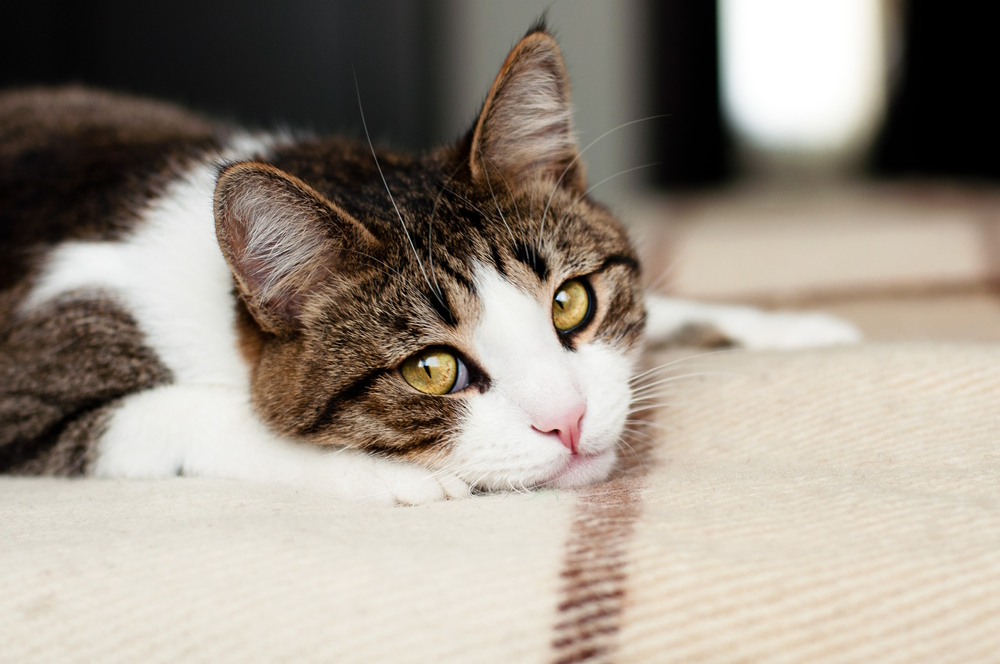

Final Thoughts
It is unusual for a cat to eat or drink when lying down unless they are being hand-fed. Although it may not necessarily be cause for concern, this behavior should not be ignored as it could be an indication of serious illness or injury. Assess the whole picture to get an idea of what your cat has been doing recently, and whether they have shown any signs of illness, lethargy, pain, or discomfort.
A cat that has been running around, getting hot and bothered, may lay down to drink just because they’re knackered, but it is more likely a sign that there’s a problem. If you are at all worried about your cat, contact your vet immediately, or you can even schedule an appointment to talk to one of our vets online.
Featured Image Credit: TarasBeletskiy, Shutterstock
